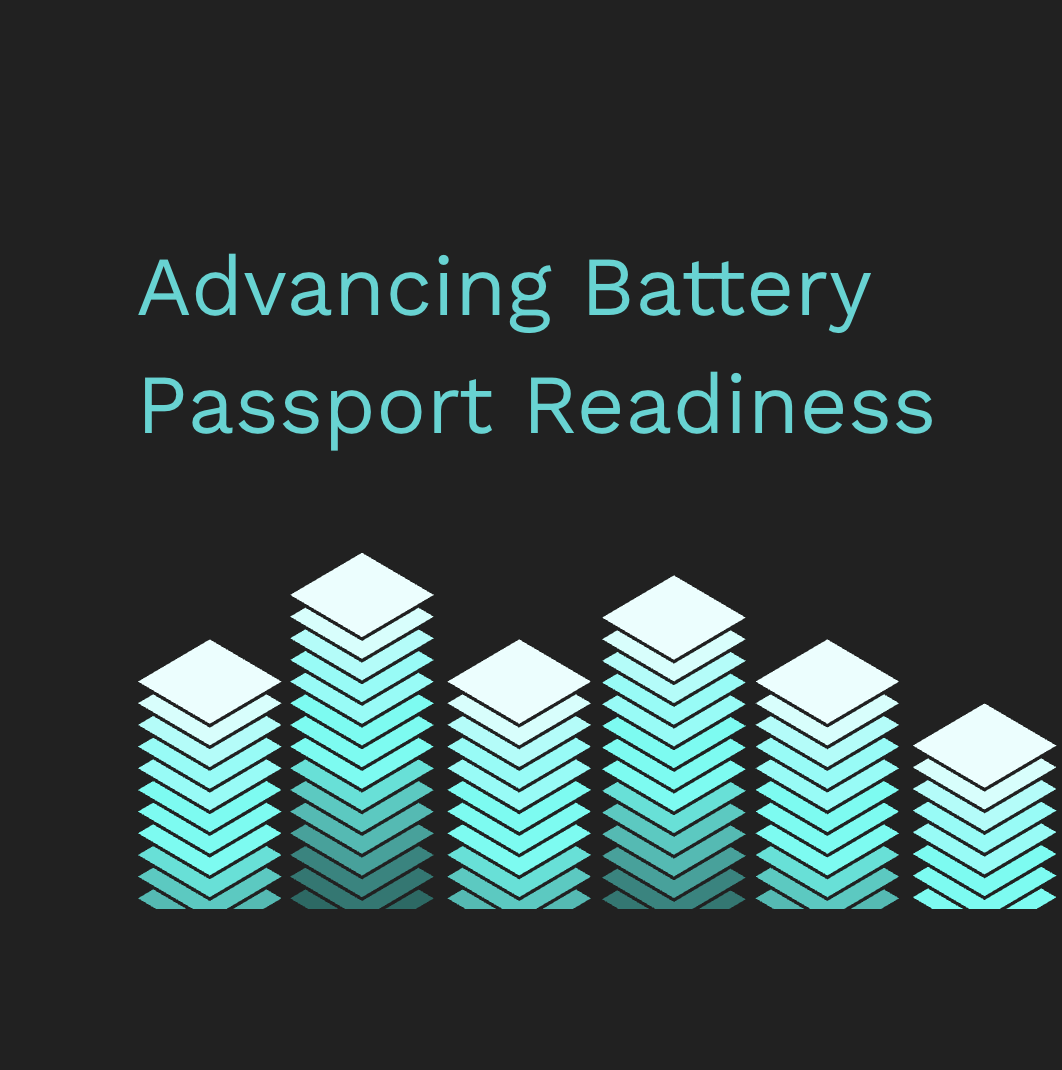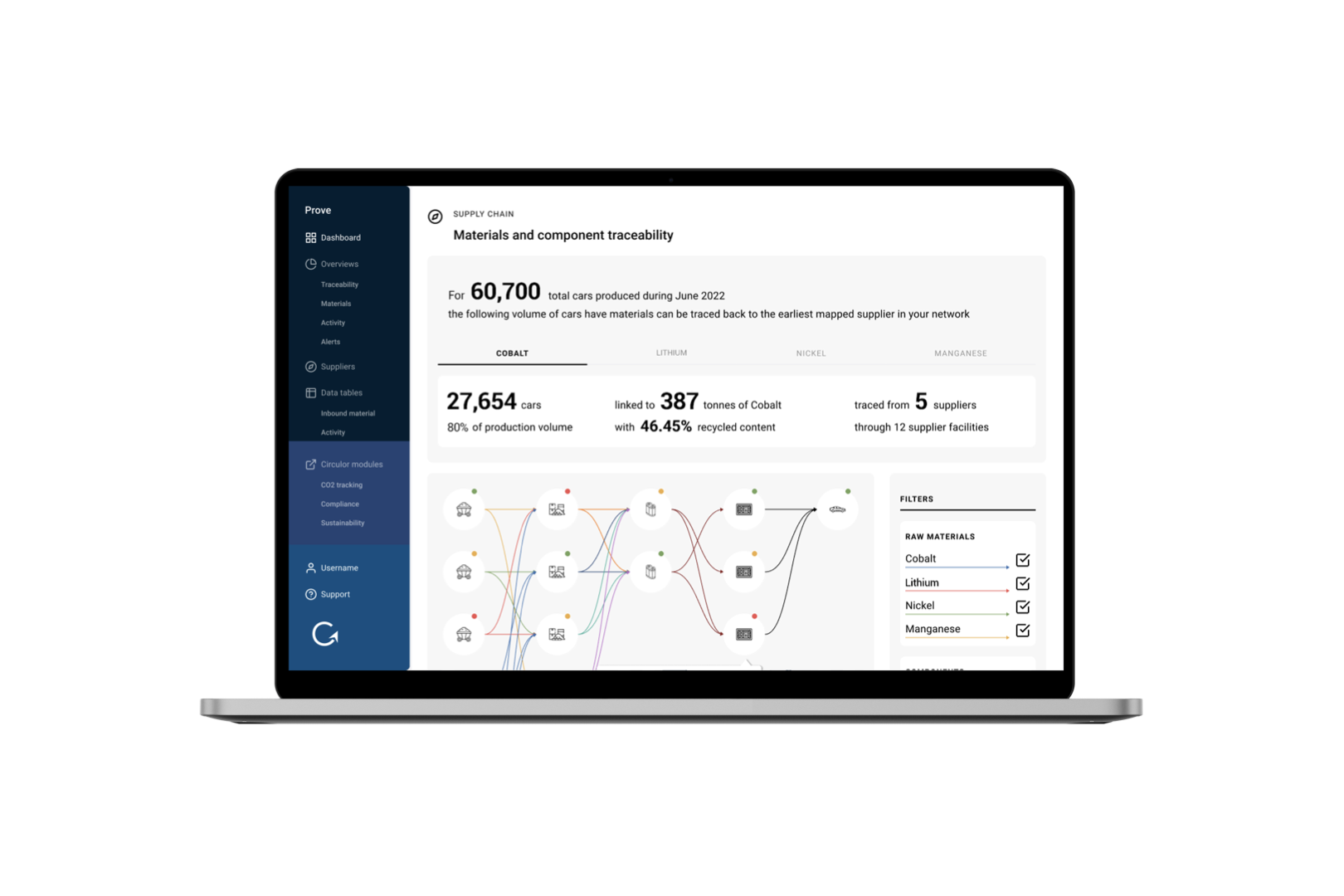
29.11.2023
News
November 2023 Newsletter: Can’t have one without the other. Recycled content and material traceability.
The benefits and advantages of recycling are well understood as the need to conserve resources, control costs, and reduce our environmental footprint remain high on the business agenda.
With the global shift to electric vehicles (EVs) equating to $8.8 trillion in economic opportunity by 2030 and $571 trillion by 2050, we are seeing technology startups race to improve recycling processes for EV batteries, particularly as the first electric cars near end-of-life, and investors inject billions into recycling facilities worldwide. The reasons are twofold: to properly prepare for safe handling, second life, and proper disposal of EV batteries, and also to be ready and even take advantage of associated regulations and financial incentives that demand minimum recycled content in next generation batteries.
While recycling rates are currently low, things are starting to change. This is in part due to the EU Battery Regulation, which requires a battery’s economic operator to disclose its recycled content by August 2028, introduces a mandatory minimum share of recycled materials for EV, light means of transport, and industrial batteries by 2031, and incorporates the adoption of battery passports to facilitate efficient and effective pathways to second life and recycling.
And it’s not just in Europe. Battery metals recycling is a priority for the U.S. too. Under both the Biden Administration’s Bipartisan Infrastructure Legislation and the Inflation Reduction Act, billions in government incentives are available to those companies and products that prove that critical minerals are procured within North America and via recycling processes.
Instrumental to meeting regulatory requirements will be the data that battery manufacturers and original equipment manufacturers need to prove that their next generation products do indeed include recycled content. Applying material traceability between recyclers and their downstream customers can accomplish three key objectives: first, sufficiently evidence North American or regional recycled content as increasingly required by global markets; second, provide digital proof as to the quality of increasingly circular battery materials; and third, initiate and accelerate more closed loop recycling to create differentiation within the industry.
Our latest blog explores in greater detail the specific data manufacturers are looking for from their recyclers and how that are best supplied with material traceability—it's worth a read
We look forward to continuing to bring you these global insights both here, as well as on circulor.com and LinkedIn. More on the latest global traceability trends below.
What we're reading...
Battery recyclers set to take center stage
Hydrovolt's cutting-edge battery recycling plant in Fredrikstad, as featured in the Financial Times, stands at the forefront of sustainable resource management. This facility, a joint venture between Norsk Hydro and Northvolt, is a significant stride in clean tech, transforming the way critical minerals and battery metals are sourced. By focusing on efficient recycling methods, Hydrovolt is pioneering the concept of "above-ground mining," and, set against the backdrop of initiatives like the European Union's Critical Raw Materials Act, highlights the growing strategic importance of supply chain resiliency for these indispensable materials.
Net Zero 2025 and the Battery Arms race
Benchmark's “Net Zero 2050 and the Battery Arms Race” report presents a balanced analysis of the challenges and opportunities in expanding the lithium-ion battery and critical mineral supply chains. It identifies the need to increase supplies of key minerals like lithium, nickel, graphite, cobalt, and manganese, essential for lithium-ion battery production, to meet a 240 TWh target by 2050. Astutely, the report also highlights that “understanding the upstream dynamics, all the way to the mine, is central to working out whether rapid scaling is possible and how quickly we can achieve Net Zero”. Circulor shares more on this topic here.
UK to press ahead with carbon border tax in 2026
The Financial Times details the UK's plan, led by Chancellor Jeremy Hunt, to introduce a carbon border tax by 2026. This policy, part of the UK's evolving economic landscape, aligns with actions being considered in other global markets, as international economic and trade policies undergo significant changes, and the EU enacts its Carbon Border Adjustment Mechanism. The UK's approach is indicative of its efforts to adapt to the changing global economic environment.
Redwood and Toyota announce second phase of partnership, expanding collaboration on recycled content
Redwood Materials announces the second phase of its partnership with Toyota, supplying cathode active materials and anode copper foil from its upcoming battery manufacturing plant in North Carolina, U.S. Redwood will recycle Toyota’s EV and Prius hybrid vehicle batteries, targeting a minimum of 20% recycled nickel, 20% recycled lithium, and 50% recycled cobalt for cathode materials and 100% recycled copper for the company’s anode production. Redwood claims that, when achieved, these materials will be the most sustainable battery materials in the world.
Exxon aims to produce lithium in foray from fossil fuel
Exxon Mobil Corp. has declared its intent to become one of the largest lithium suppliers, according to Bloomberg. The company plans to use Direct Lithium Extraction (DLE) to extract the metal from saltwater reservoirs in Arkansas' southern Smackover Formation. Unlike traditional hard-rock mining and brine ponds, Exxon says that DLE offers several benefits, including minimal land use and a reduced environmental footprint. The company's first lithium production is expected by 2027, with plans to scale supplies for approximately 1M electric vehicles annually by 2030.
What we're sharing...
StoreDot and Circulor: together creating transparent EV supply chains
Achieving Net Zero relies on the world multiplying current battery production by over 15 times by 2050, while also keeping emissions low and protecting both people and planet. By digitally tracing materials through production, Circulor provides battery maker StoreDot with supply chain visibility and granular emissions tracking that strengthen accountability throughout their upstream suppliers. Such transparency will prove essential as regulations require verifying sourcing and substantiating sustainability claims. Partnerships like StoreDot and Circulor’s are key—by sharing data, industry players can help drive accountability, make CO₂ data accessible, and build sustainable and ethical supply chains. Read more.
The effective transition from fossil fuels to critical minerals
Transitioning the global economy to critical minerals by 2050 is a $571 trillion opportunity. Africa holds a third of the world’s critical minerals; South America’s “Lithium Triangle” controls 60% of lithium reserves; and western countries are bringing hundreds of billions of dollars of investment into the picture to ensure resilient and sustainable supplies. Winners in this global transformation are not a given and those most likely to take advantage are deploying supply chain transparency provisions—like those that Circulor can address—to think ahead and create the necessary industrial and international coordination. Read more.
Why third-party neutrality is key in supply chain transparency
An independent third-party can offer unbiased assessments of supply chains, free from the influence of specific stakeholders such as suppliers or buyers. Collaborating with an experienced third-party like Circulor, can guarantee that the information provided reflects genuine efforts towards environmental and social responsibility, and validate sustainability initiatives as authentic rather than mere greenwashing. Read more.
Recycled content...plus proper proof
With the EU planning to ban general environmental assertions, such as "climate neutral," by 2026, unless properly substantiated, manufacturers—especially those producing batteries—will be required to prove increases in the recycled content of their products. Getting started now, with a traceability solution such as Circulor’s, is a smart move for companies wanting to prepare for these growing requirements, while also opening new opportunities that can come with circular economies built with proof. Read more
UK strengths in ESG
Last month the Critical Minerals Association (UK) ran an ESG policy networking event in coordination with the meeting of the Minerals Security Partnership (MSP) members, 14 country partners representing 50% of global GDP and working together on critical mineral supply chains. The session brought together ESG experts, including Circulor CEO, Douglas Johnson-Poensgen, and international government officials to discuss the importance of sustainability and responsibility in making a successful global energy transition. Watch the highlights here.





![Acculon RA Circulor - website image.001[44].png](/_next/image?url=https%3A%2F%2Fdecisive-wonder-fa24533282.media.strapiapp.com%2FAcculon_RA_Circulor_website_image_001_44_2720fb315d.png&w=1920&q=75)




